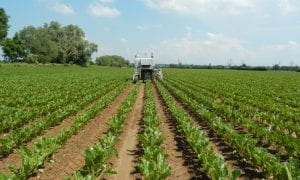 You are invited to attend a research seminar by Cyrill Stachniss (University of Bonn, Germany), one of the world-leading experts in robotic perception, on “Robotic Perception for Agricultural Environments” as part of the School of Computer Science Research Seminar Series.
You are invited to attend a research seminar by Cyrill Stachniss (University of Bonn, Germany), one of the world-leading experts in robotic perception, on “Robotic Perception for Agricultural Environments” as part of the School of Computer Science Research Seminar Series.
When: 3/12/2019, 3-4PM
Where: INB1103
Robotic Perception for Agricultural Environments
Abstract
Autonomous robots need the ability to perceive and model their environment and to make appropriate decisions in complex situations on their own. The complexity results from the high-dimensional perceptions, the large number of possible actions and the uncertainty about the state of the world.
In this talk, Prof Stachniss will present recent developments for solving different problems in the context of mobile robot perception operating on real fields. The talk covers recent results from several research projects focussing on UAVs and UGVs in the context of crop production conducted at the Photogrammetry & Robotics Lab in Bonn. The talk furthermore covers ongoing developments of the Cluster of Excellence on “Robotics and Phenotyping for Sustainable Crop Production (PhenoRob)”.
Bio of Speaker
Cyrill Stachniss is a full professor at the University of Bonn and heads the Photogrammetry and Robotics Lab. Before that, he was with the University of Freiburg and the Swiss Federal Institute of Technology. Since 2010 a Microsoft Research Faculty Fellow and received the IEEE RAS Early Career Award in 2013. From 2015-2019, he was senior editor for the IEEE Robotics and Automation Letters. Together with his colleague Heiner Kuhlmann, he is the spokesperson of the DFG Cluster of Excellence “PhenoRob” at the University of Bonn. In his research, he focuses on probabilistic techniques for mobile robotics, navigation, and visual perception. His field of research includes localization, SLAM, exploration, agricultural robotics, computer controlled cars, and UAVs. He has co-authored over 200 publications.
